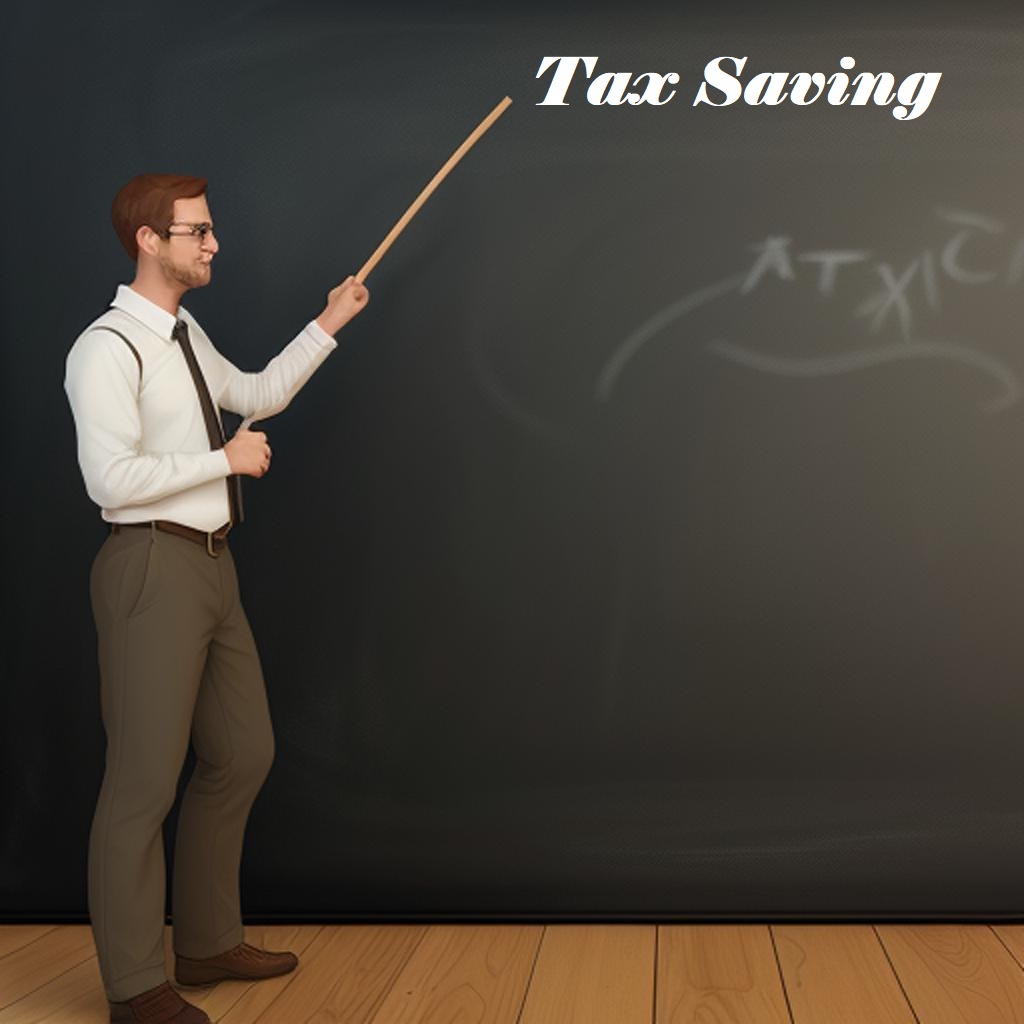Tax Saving Investment In India Including HRA : Introduction
Tax saving is an essential aspect of financial planning in India. It allows individuals to optimize their tax liability by making strategic investments and taking advantage of various provisions in the tax laws. One such avenue for tax-saving is through investments and claiming deductions under the House Rent Allowance (HRA) scheme. In this article, we will explore the concept of tax-saving investments in India, with a special focus on the HRA component. We will delve into the different investment options available, provide examples for better understanding, and address frequently asked questions to help you make informed decisions. So let’s dive in!

Table of Contents
- Understanding Tax Saving Investments
- Exploring HRA and its Benefits
- Tax Saving Investment Options in India
- Public Provident Fund (PPF)
- Employee Provident Fund (EPF)
- National Pension Scheme (NPS)
- Tax-Saving Fixed Deposits
- Equity-Linked Saving Scheme (ELSS)
- National Savings Certificate (NSC)
- Senior Citizen Savings Scheme (SCSS)
- Sukanya Samriddhi Yojana (SSY)
- Unit Linked Insurance Plans (ULIPs)
- Life Insurance Premiums
- Health Insurance Premiums
- Education Loan Interest
- Home Loan Interest
- Donations to Charitable Organizations
- Tuition Fees for Children’s Education
- Example: Tax Savings with HRA Component
- Frequently Asked Questions (FAQs)
- How does HRA affect tax savings?
- Can I claim both HRA and home loan interest deduction?
- What is the maximum limit for tax-saving investments?
- Are there any restrictions on withdrawing tax-saving investments?
- Can I invest in multiple tax-saving options simultaneously?
- What happens if I fail to submit proof for tax-saving investments?
- Conclusion
Understanding Tax Saving Investments
Tax-saving investments refer to financial instruments that offer individuals the opportunity to reduce their taxable income and save on income tax. These investments are designed to encourage savings and channelize funds into productive sectors of the economy. By investing in tax-saving instruments, individuals can not only reduce their tax liability but also grow their wealth over time.
Exploring HRA and its Benefits
House Rent Allowance (HRA) is a component of the salary package provided by employers to employees to meet their rental expenses. HRA is eligible for tax exemption under certain conditions specified by the Income Tax Act. To claim the HRA exemption, individuals must meet specific criteria and provide relevant documents such as rent receipts and the landlord’s PAN (Permanent Account Number).
Claiming HRA can significantly reduce an individual’s taxable income, resulting in lower tax liability. By utilizing the HRA component effectively and investing in tax-saving instruments, individuals can optimize their tax savings and achieve financial goals.
Tax Saving Investment Options in India
Public Provident Fund (PPF)
The Public Provident Fund (PPF) is a popular long-term investment option in India that offers attractive interest rates and tax benefits. Contributions made to PPF are eligible for deductions under Section 80C of the Income Tax Act. The interest earned and the maturity amount are tax-free. PPF has a lock-in period of 15 years, and individuals can extend it in blocks of 5 years.
Employee Provident Fund (EPF)
The Employee Provident Fund (EPF) is a retirement benefit scheme available to salaried employees. Contributions made to EPF are eligible for deductions under Section 80C. The interest earned on EPF contributions is tax-free. EPF follows the Exempt-Exempt-Exempt (EEE) tax regime, where contributions, interest, and withdrawals are tax-exempt under certain conditions.
National Pension Scheme (NPS)
The National Pension Scheme (NPS) is a voluntary retirement savings scheme regulated by the Pension Fund Regulatory and Development Authority (PFRDA). NPS offers tax benefits under Section 80C and Section 80CCD(1B) of the Income Tax Act. It provides individuals with the option to choose between different asset classes for investment. NPS also offers the flexibility to withdraw a portion of the accumulated corpus at retirement.
Tax-Saving Fixed Deposits
Tax-Saving Fixed Deposits are fixed deposit schemes offered by banks with a lock-in period of five years. Investments in tax-saving fixed deposits are eligible for deductions under Section 80C. However, the interest earned on these deposits is taxable. It is essential to consider the interest rates and the tax implications before investing in tax-saving fixed deposits.
Equity-Linked Saving Scheme (ELSS)
Equity-Linked Saving Scheme (ELSS) is a type of mutual fund that invests primarily in equities. ELSS offers tax benefits under Section 80C of the Income Tax Act. ELSS has a lock-in period of three years, which is the shortest among all tax-saving investments. ELSS provides an opportunity for capital appreciation while offering tax-saving benefits.
National Savings Certificate (NSC)
The National Savings Certificate (NSC) is a fixed-income investment scheme offered by the Indian government. NSC has a lock-in period of five years and offers tax benefits under Section 80C. The interest earned on NSC is taxable. NSC is a safe investment option with a fixed interest rate.
Senior Citizen Savings Scheme (SCSS)
The Senior Citizen Savings Scheme (SCSS) is a government-backed savings scheme available to senior citizens. SCSS offers a higher interest rate compared to other small savings schemes. Investments in SCSS are eligible for deductions under Section 80C. SCSS has a lock-in period of five years, extendable by an additional three years.
Sukanya Samriddhi Yojana (SSY)
Sukanya Samriddhi Yojana (SSY) is a savings scheme aimed at promoting the welfare of the girl child. It offers tax benefits under Section 80C. SSY has a lock-in period of 21 years or until the girl child attains the age of 18, whichever is earlier. The interest earned and the maturity amount are tax-free. SSY provides a higher rate of interest compared to other fixed-income instruments.
Unit Linked Insurance Plans (ULIPs)
Unit Linked Insurance Plans (ULIPs) are investment-cum-insurance products that offer dual benefits. ULIPs provide tax benefits under Section 80C. They offer the flexibility to invest in different asset classes based on risk appetite. ULIPs provide life cover and the opportunity to grow wealth through investment in equity or debt instruments.
Life Insurance Premiums
Premiums paid towards life insurance policies are eligible for deductions under Section 80C. Life insurance provides financial protection to individuals and their families in case of unfortunate events. It offers peace of mind and acts as a tool for long-term savings.
Health Insurance Premiums
Health insurance premiums paid for self, spouse, children, and parents are eligible for deductions under Section 80D. Health insurance provides coverage for medical expenses and safeguards individuals from the financial burden of healthcare emergencies.
Education Loan Interest
Interest paid on education loans is eligible for deductions under Section 80E. This provision helps individuals reduce the financial burden of education expenses. The deduction is available for a maximum of eight years or until the interest is fully repaid, whichever is earlier.
Home Loan Interest
Interest paid on home loans is eligible for deductions under Section 24(b) of the Income Tax Act. The deduction is available up to a maximum of ₹2 lakh per financial year for self-occupied properties. For let-out or deemed let-out properties, there is no upper limit on the deduction.
Donations to Charitable Organizations
Donations made to registered charitable organizations are eligible for deductions under Section 80G. This provision encourages individuals to contribute to social causes and support charitable activities. The deduction amount varies based on the nature of the charitable organization.
Tuition Fees for Children’s Education
Tuition fees paid for children’s education are eligible for deductions under Section 80C. This provision encourages parents to invest in their children’s education and provides relief from the financial burden of school fees.
Example: Tax Savings with HRA Component
Let’s consider an example to understand how tax savings can be achieved by utilizing the HRA component. Suppose Mr. Sharma receives a monthly salary of ₹50,000, and his HRA component is ₹15,000. His actual rent expense is ₹12,000 per month. Mr. Sharma lives in a metro city, where the HRA exemption is 50% of the basic salary.
To calculate the HRA exemption, we first determine the least of the following three amounts:
- Actual HRA received: ₹15,000 per month (₹1,80,000 per year)
- Rent paid minus 10% of salary: ₹12,000 – (10% of ₹50,000) = ₹12,000 – ₹5,000 = ₹7,000 per month (₹84,000 per year)
- 50% of the basic salary: 50% of ₹50,000 = ₹25,000 per month (₹3,00,000 per year)
In this case, the least of the three amounts is ₹7,000 per month (₹84,000 per year). Hence, Mr. Sharma can claim an HRA exemption of ₹7,000 per month, resulting in a total exemption of ₹84,000 per year. The remaining HRA component (₹15,000 – ₹7,000 = ₹8,000 per month) will be taxable.
By utilizing the HRA exemption and investing in tax-saving instruments, Mr. Sharma can further optimize his tax savings and reduce his tax liability.
Frequently Asked Questions (FAQs)
Q: How does HRA affect tax savings?
A: HRA can significantly reduce an individual’s taxable income by providing an exemption on a portion of the rent paid. By utilizing the HRA component effectively and investing in tax-saving instruments, individuals can optimize their tax savings and reduce their tax liability.
Q: Can I claim both HRA and home loan interest deduction?
A: Yes, you can claim both HRA and home loan interest deduction if you satisfy the eligibility criteria for both. HRA can be claimed if you are a salaried individual living in a rented house, while home loan interest deduction can be claimed if you have taken a home loan and are repaying the interest.
Q: What is the maximum limit for tax-saving investments?
A: The maximum limit for tax-saving investments under Section 80C is ₹1.5 lakh per financial year. However, certain investments like NPS (additional ₹50,000 under Section 80CCD(1B)) and medical insurance premiums (additional deductions under Section 80D) have separate limits.
Q: Are there any restrictions on withdrawing tax-saving investments?
A: Yes, tax-saving investments generally have a lock-in period during which withdrawals are not allowed or are subject to penalties. It is essential to consider the lock-in period before investing in tax-saving instruments.
Q: Can I invest in multiple tax-saving options simultaneously?
A: Yes, you can invest in multiple tax-saving options simultaneously. However, ensure that the total investments do not exceed the maximum limit of ₹1.5 lakh per financial year under Section 80C.
Q: What happens if I fail to submit proof for tax-saving investments?
A: If you fail to submit proof for tax-saving investments to your employer, the deductions may not be considered while calculating your tax liability. It is important to submit the necessary documents within the specified timeline to avail of the tax benefits.
For official information and resources regarding tax-saving and investment in India, please visit the official government website at www.indiagovernment.in. Gain access to reliable and up-to-date information on tax laws, deductions, investment options, and other relevant financial details provided by the government of India.
Conclusion
Tax-saving investments in India, including the utilization of the HRA component, play a crucial role in optimizing tax savings and reducing tax liabilities. By understanding the various investment options available and their associated tax benefits, individuals can make informed decisions and achieve their financial goals. It is essential to consult with a financial advisor and assess one’s financial situation before making investment choices. By planning strategically and utilizing tax-saving provisions effectively, individuals can enhance their financial well-being and create a secure future.
“Additionally, for more insightful articles and information on various topics, you can visit the informative website www.thefingain.com. It offers a wide range of articles and resources to expand your knowledge and explore diverse subjects.”

